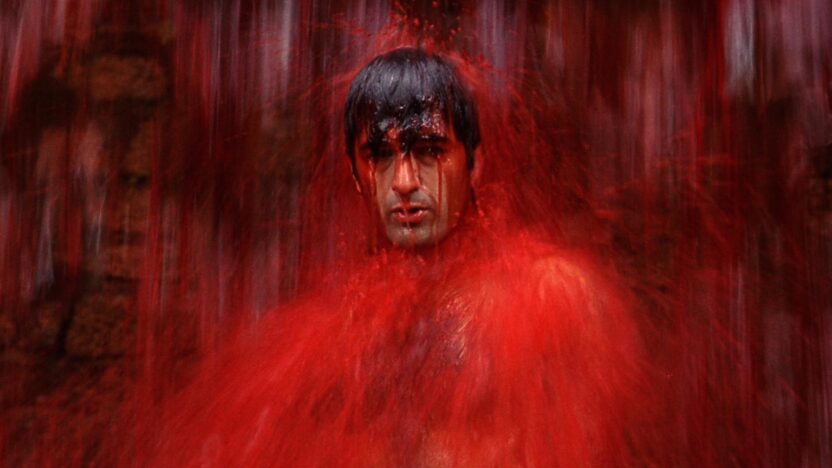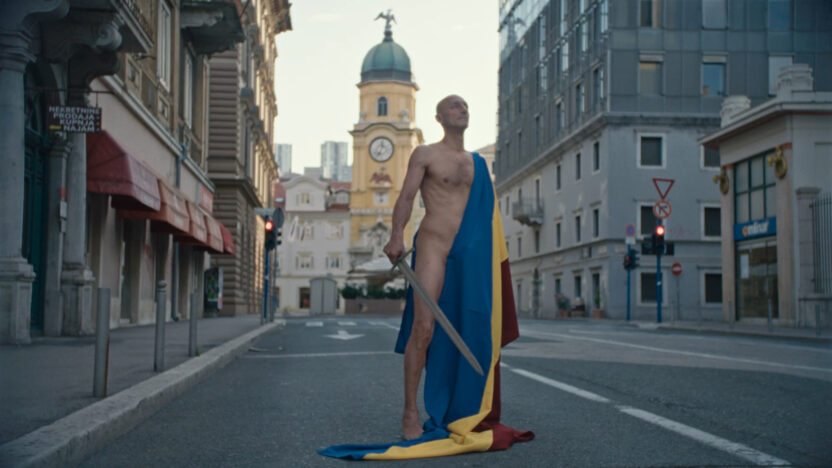A Cornucopia of Marvels
IFFR programmer Olaf Möller offers an insight into the IFFR 2024 Cinema Regained programme.

The history of cinema is a treasure trove. Year in, year out films, sometimes whole œuvres surface and resurface about which little if any writing can be found – each one a question posed to us by the past, each one an opportunity to rethink what we believe to know about cinema, each one a potential gateway to a future film culture we hadn’t yet imagined. IFFR’s Cinema Regained programme relishes in this spirit and delights in these discoveries, offering its audiences the chance to see something from the deep folds and the hidden creases of cinema’s vastness.
Our shorts programme A Flight of Films offers works by three different auteurs who have been situated at varying degrees of obscurity. A most special case is that of Kai Oka, born 1954 to a Finnish family in (West) Berlin but who grew up in Montreal. Oka made all of his films there while studying at McGill University, showing them only in the classroom, never publicly, making the presentation of Blue Green Summer (1974), Oblivion Way (1974) and Before and After Zeno (1978) at IFFR a veritable world premiere – after almost half a century! Despite working in the 1980s for the National Film Board of Canada, Oka never made filmmaking his career. Fittingly, it wasn’t Oka himself who drew attention to his films, but fate. Cinephile Juha Mattila bought some rolls of film on the internet, taking a closer look at them he was intrigued to discover works imbued with a Brakhageian sensibility. He then called a friend, filmmaker and journalist Eero Tammi, who after also taking a look at the materials called IFFR favourite Mika Taanila who, more than a little fascinated by it all, then took matters further. Locating Oka in a small Finnish town some four hours away from the capital and helping to get the films digitally secured by the National Audiovisual Archive (KAVI), as well as writing about them in an essay on lost avantgarde cinema for an anthology on Finnish media art. Oka was surprised by all this, as he wasn’t even aware that his films had vanished, probably while moving – he thought they were still somewhere in his home! Franklin Miller’s films, then, resurfaced in no small part thanks to the efforts of Peter Conheim who became interested in them while working on the restoration of Joseph L. Anderson’s Spring Night, Summer Night (1967), co-written, co-produced, co-edited and scored by Miller – the zenith of their six year collaboration. One can only wonder why it’s almost impossible to find anything on Franklin Miller despite his quite hefty filmography and many festival and museum screenings. Documentary (1971), Stores (1973) and The Sum of Perfection (1977) should make it clear that Miller’s work is ripe for (re)new(ed) interest. IFFR mainstay Roberto Taroni, finally, was there all along – just that the more recent part of his filmmaking, as one half of the collective Flatform, might have come to overshadow his 1970s and 1980s work often made in tandem with Luisa Cividin, which due to their format (Super-8 and 16mm) were also precarious creatures. A massive digital restoration effort had only now made the expansive corpus of Cividin and Taroni’s work in experimental cinema and film performance easily accessible.
Ester Krumbachová’s Vražda ing. Čerta (1970) and Bridgett Davis’ Naked Acts (1998), both sole directorial efforts, have also been relegated to the murkier corners of film history. Although neither work is truly unknown, both were comparatively rarely shown or discussed since their difficult original releases. For Krumbachová, the timing couldn’t have been worse: smack during the early, especially glacial stages of Normalisation (after the Prague Spring) when the film’s surrealist inspiration, as well as its twisted feminist subversion, stood for everything the official mood didn’t want. As for Naked Acts, one can only suspect that the film was deemed not scintillating enough by distributors – nothing that jumps at you with outré aesthetics or some loud messaging: how much it had to do with the film’s female perspective on questions like power, or sexuality, is similarly anybody’s guess. In both cases, the restorations hopefully mean a second chance at finding new audiences open to their ideas.
Let’s mention one more programme dedicated to a director whose works are only now appreciated as a whole, Katja Raganelli. In her case, it was Stefan Drößler of the Filmmuseum München who started to triumph her case a few years ago. We are very happy to show the latest restorations he made from Raganelli’s œuvre: two film school exercises and one early mid-length television feature. Wherein one witnesses an imagination ripe with pop iconography and politics – visions of assassinations and flights to freedom which, just like Solveig Nordlund’s formidable James G. Ballard adaptation Aparelho Voador a Baixa Altitude (2002), chime chillingly with our programme on Chilean cinema in exile. But there’s also a casual connection to another film screened here in Cinema Regained: Tristan und Isolde – Director’s Cut (1981/2024) whose auteur, Veith von Fürstenberg, was part of a late sixties Munich film scene close in spirit to that cultivated by some of Raganelli’s fellow students, and noticeable in her films Flucht (1970) and El Cigarron (1971).
All of which doesn’t mean that this section is dedicated only to the obscure and unknown! Yamamoto Satsuo’s masterpiece of political cinema, Shiroi kyotō (1966), is at least in Japan quite beloved, the same goes in Hungary for Ranódy László’s Árvácska (1976), an adaptation of Móricz Zsigmond’s eponymous 1941 classic – but, of course, beyond their local contexts, these remain treasures to unearth.
We would like to dedicate this edition of Cinema Regained to the memory and the spirit of two Michels who left us in 2023, Michel Ciment and Michel Demopoulos.
– Olaf Möller
A list with articles
-

Get in the IFFR 2026 mood with these films by returning filmmakers on IFFR Unleashed
Published on:-
Unleashed
-
-

From Rotterdam to Rijeka: Igor Bezinović on the journey of Tiger-winner Fiume o Morte!
Published on:-
Interview
-
News
-
-

